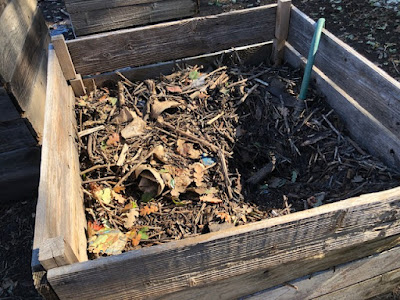
Placer County Master Gardeners offer free online workshop

|
|
Leaves make great compost! They also work as
mulch for the fall and winter garden. Learn the
details in a master gardener Zoom workshop.
(Photo: Kathy Morrison)
|
What do you do with all those fall leaves? Make compost and mulch!
Learn how during a free Zoom workshop, offered by the UC Cooperative Master Gardeners of Placer County.
Set for 10:30 a.m. Saturday, Oct. 30, “Composting and Mulching” will tackle how to do both – and why they’re important to your garden and soil health.
“Learn the basics of backyard composting and how it can improve your soil,” say the master gardeners. “You will learn how to get started and keep your compost pile healthy. We will also discuss the benefits of using mulch to help keep your soil healthy and happy.”
No advance registration is required for this one-hour workshop, which was originally presented in November 2020.
Here’s the Zoom link: https://us02web.zoom.us/j/84410333085?
Passcode: garden
Details and links to past Placer County Master Gardener workshops: https://pcmg.ucanr.org/ .
Comments
0 comments have been posted.Sacramento Digs Gardening to your inbox.
Sites We Like
Garden Checklist for week of July 21
Your garden needs you!
* Keep your vegetable garden watered, mulched and weeded. Water before 8 a.m. to reduce the chance of fungal infection and to conserve moisture.
* Feed vegetable plants bone meal, rock phosphate or other fertilizers high in phosphate to stimulate more blooms and fruiting. (But wait until daily high temperatures drop out of the 100s.)
* Don’t let tomatoes wilt or dry out completely. Give tomatoes a deep watering two to three times a week.
* Harvest vegetables promptly to encourage plants to produce more. Squash especially tends to grow rapidly in hot weather. Keep an eye on zucchini.
* Pinch back chrysanthemums for bushy plants and more flowers in September.
* Remove spent flowers from roses, daylilies and other bloomers as they finish flowering.
* Pinch off blooms from basil so the plant will grow more leaves.
* Cut back lavender after flowering to promote a second bloom.
* It's not too late to add a splash of color. Plant petunias, snapdragons, zinnias and marigolds.
* From seed, plant corn, pumpkins, radishes, winter squash and sunflowers.